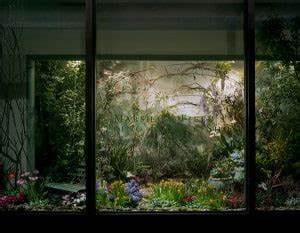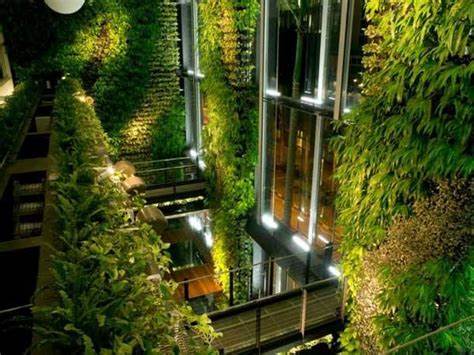
Vertical Gardens: Enhancing Urban Environments through Biophilic Design
Introduction
Vertical gardens, also known as living walls, have gained significant attention in recent years for their ability to transform urban environments into lush, green spaces. The philosophy of biophilia, which emphasizes the inherent connection between humans and nature, forms the foundation for incorporating vertical gardens in urban design. This article explores the historical background, benefits, psychological effects, case studies, current trends, challenges, and future outlook of vertical gardens and biophilic design.
Historical Background
Vertical gardens have a rich history dating back to ancient civilizations. The Hanging Gardens of Babylon, one of the Seven Wonders of the Ancient World, serve as an early example of vertical gardens. The philosophy of biophilia, coined by renowned biologist Edward O. Wilson, emerged in the late 20th century, highlighting the importance of human-nature interaction for well-being.
Key Concepts and Definitions
Vertical gardens are structures adorned with plants, offering numerous benefits such as improving air quality, providing insulation, and creating green spaces in urban areas. Biophilia emphasizes the positive influence of natural elements on human health and well-being. Vertical gardens serve as a tangible representation of biophilic design principles in action.
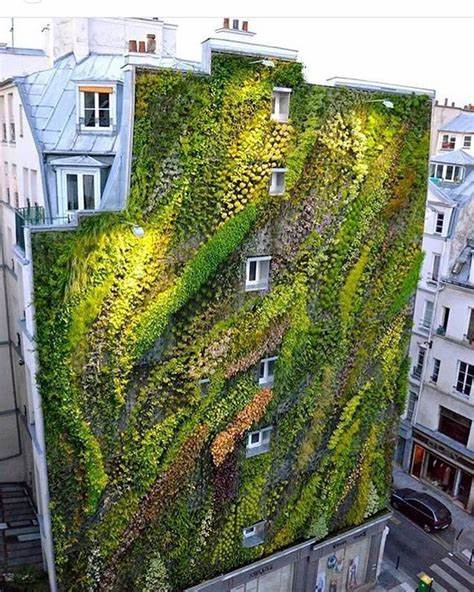
Main Discussion Points
Point: Benefits of Vertical Gardens
Vertical gardens offer a range of benefits to urban environments. They improve air quality by absorbing pollutants and releasing oxygen. These gardens contribute to enhanced thermal insulation, reducing energy consumption for heating and cooling. Vertical gardens also create much-needed green spaces in densely populated areas, promoting biodiversity and offering a respite from concrete jungles.
Point: Biophilic Design Principles
Biophilic design principles integrate natural elements and materials into architectural design. By incorporating natural lighting and providing views of nature, buildings become more conducive to human well-being. The use of natural patterns and shapes in interior design fosters a sense of calm and connection with the environment.
Point: Psychological and Health Effects of Vertical Gardens
Research shows that exposure to vertical gardens has a positive impact on mental well-being, reducing stress and enhancing overall mood. In workplace environments, these gardens increase productivity and creativity. Vertical gardens have also been attributed to improved physical health and expedited healing processes in healthcare facilities.
Case Studies or Examples
Real-world examples showcase the success of vertical gardens. The Bosco Verticale in Milan, Italy, serves as an iconic example, providing green living spaces for residents while reducing carbon emissions. Another notable project is the One Central Park in Sydney, Australia, where vertical gardens and hanging plants adorn the facades, creating a visually striking display of nature within the city.
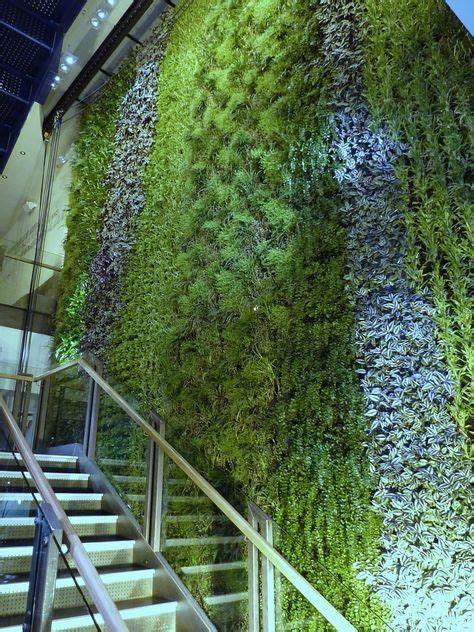
Current Trends or Developments
The adoption of vertical gardens and biophilic design is witnessing a surge in various industries. Architects and designers are increasingly incorporating these elements to meet the growing demand for sustainable and health-promoting spaces. Recent research findings further strengthen the case for vertical gardens, highlighting their positive effects on individuals’ well-being and the surrounding communities.
Challenges or Controversies
Implementing and maintaining vertical gardens face challenges such as limited space and technical requirements. A lack of suitable infrastructure can hinder the widespread adoption of vertical gardens in densely populated urban areas. Additionally, controversies and alternative perspectives surround the philosophy of biophilia, with critics questioning its validity and suggesting alternative approaches to urban design.
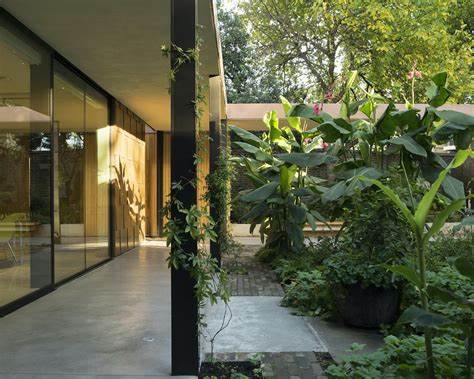
Future Outlook
The future implications of vertical gardens and biophilic design in urban planning and architecture are promising. As cities become increasingly populated, the integration of green spaces through vertical gardens will play a crucial role in promoting sustainable urban development. Advancements in vertical garden technologies, such as automated irrigation systems and modular designs, will further enhance their accessibility and functionality.
Conclusion
Vertical gardens, inspired by the philosophy of biophilia, hold immense potential in transforming urban environments into healthier, more sustainable spaces. Their benefits, ranging from improved air quality to psychological well-being, make them a valuable addition to modern design practices. By embracing vertical gardens and biophilic design principles, we can create cities that prioritize human well-being and harmonious coexistence with nature.
References
Wilson, E. O. (1984). Biophilia. Harvard University Press.
Pardal, S., et al. (2021). Vertical Gardens: A Review of Benefits, Limitations, and Trends. Sustainability, 13(7), 3758.
Kellert, S. R., et al. (2008). The Biophilia Hypothesis. Island Press.
Gómez, A. P., et al. (2019). Biophilic Cities: A Systematic Review of the Scientific Literature. Sustainability, 11(18), 4987.



